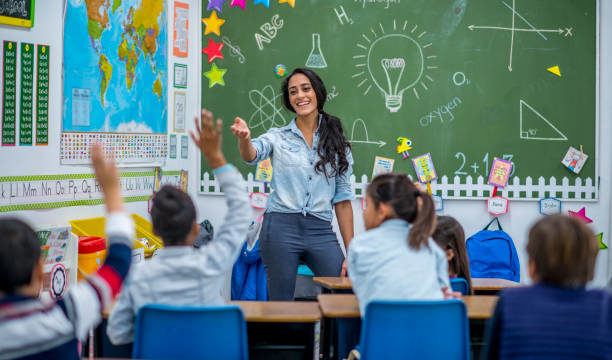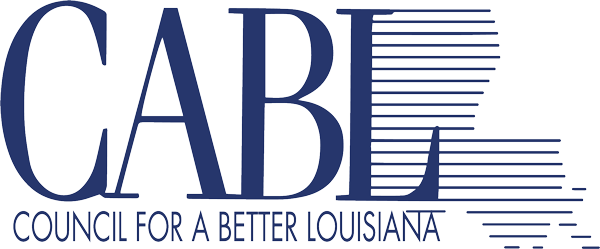
The takeaway from a recent story in the Washington Post is somewhat sobering. While it had earlier appeared that students were on the path to academic recovery after the education disruptions caused by the COVID-19 pandemic, new national research suggests that students are, in fact, falling farther behind. In Louisiana, that doesn’t seem to be the case.
The newspaper was looking at data from three large testing companies that analyzed test results from millions of students across the country to measure their performance before and after the pandemic.
“At the end of 2021-22, we optimistically concluded that the worst was behind us and that recovery had begun,” one of the companies said in a recent report. “Unfortunately, data from the past two school years no longer supports this conclusion.”
It went on to say that scores have actually fallen to levels that are worse than what they had thought was the low point during COVID, and the gaps in student performance before and after the pandemic are growing wider.
The good news for Louisiana is that despite our clear challenges, that doesn’t seem to be the case.
The results of the 2024 Spring LEAP assessments have just been released. CABL looked at scores primarily focusing on grades 3-8. Overall, they show that student performance on all subjects tested has returned to pre-COVID levels, though that is not the case with the core subjects of English Language Arts and math and can vary by grade. Still, the data does not show the regression seen in the national research cited by the Post.
In 2019, just before the pandemic, 34% of students in grades 3-8 performed at the level of Mastery (our state goal) or above. Generally, this was across the four subjects where students are assessed: English, math, science, and social studies.
In 2021 that dipped to 29%, but in both 2023 and 2024 returned to that earlier level of 34%. Currently, students do not appear to be growing, but they are not going backwards.

When you look more specifically at English and math, the trends are the same, but students are still shy of reaching their pre-pandemic performance levels. In English they are just one point behind where they were, while in math the gap is three points.
It is worth noting that this is similar to data we have seen earlier that suggests that students in Louisiana did not experience the more severe learning loss setbacks that those in other parts of the country seemed to.
The National Assessment of Educational Progress (NAEP) is given to students across the country every two years, though it was delayed during the pandemic. Between 2019 and 2022 Louisiana moved up in the NAEP rankings, largely because other states fell. For example, in both 2019 and 2022, Louisiana students scored 257 on the NAEP 8th grade English test. In 2019, 7 states had the same 257 score or below it. In 2022, after the pandemic, it was 15 states.
It’s hard to say exactly how the experience of students in other states compares to those in Louisiana. The Washington Post story points to a significant growth in absenteeism as a possible factor contributing to the falling test scores in many states. That makes sense, but in Louisiana, we have also experienced that same phenomenon with more kids missing class.
What we do know is that during the pandemic more students were attending classes in-person in Louisiana than was the case in many other states. We also know that our state was in the process of making a major push to improve early reading skills and later placed a significant emphasis on tutoring. All of those could be factors that benefited Louisiana students.
While there are a number of takeaways from this year’s LEAP results, in this context a couple of things stand out. One is that Louisiana is fortunate not to have seen the regression in student scores that other states are apparently experiencing. While we are not back to pre-pandemic levels of student performance in all grades, the trend is at least positive and, in most cases, scores remain close.
But the other thing to consider is that even with all of this, our performance remains low. We can’t lose sight of the fact that fewer than half of our students can read at an adequate level in third grade and nearly two-thirds are behind where we want them to be in math. When you look at grades 3-8 across all subjects, students have returned to pre-pandemic levels of performance, but that means only about a third are on grade level.
On the positive side we have made some significant policy changes that we hope will yield results. We have a strong initiative in early reading that education leaders are now trying to replicate in early math. We have placed a major focus on high-dosage tutoring and made significant changes to our school accountability system.
These things should help, but at the same time, we have taken our foot off the gas when it comes to funding early education for our youngest children. We know from other data fewer and fewer of our kids are showing up in kindergarten with the preparation and experiences they need to be successful. We get better results when we start teaching our kids earlier rather than later.
Louisiana couldn’t afford to let its children get further behind because of the pandemic, and for the most part we haven’t. But we can’t afford to allow them to remain where they are, either.
